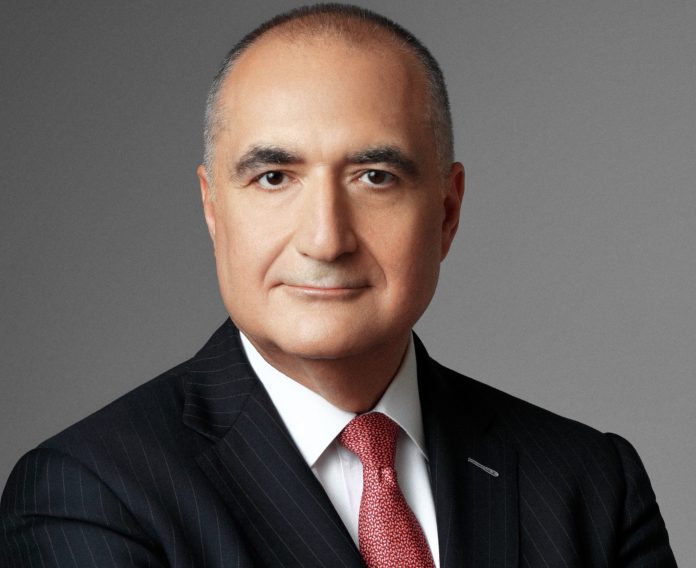The market to acquire or invest into middle market companies, the primary strategy of private equity funds, is overheated with ever increasing valuations which make it hard to identify attractive opportunities for the funds to generate the expected returns for investors.
The unofficial motto for the U.S. Postal Service is “Neither snow nor rain nor heat nor gloom-of-night, stays these couriers from the swift completion of their appointed rounds.” This also applies today to private equity firms, translated as “Neither pandemic nor inflation fears nor record valuations will stop us from dealmaking.” In all seriousness, there is a logical progression as to how the markets ended up where we are today.
Investor Demand
Over the last five years, investors have allocated record sums to private equity funds, primarily because PE returns, on a risk-adjusted basis have been very attractive. This has allowed PE firms to materially increase the size of their new funds coming into the market and still achieve their fundraising targets. For example, if Fund V of a PE firm was $3 billion, Fund VI ends up being somewhere around $5 billion. These levels of investor commitments have started a snowball effect which has resulted in the current market conditions.
Dry Powder
In order to maximize IRR returns to investors, the private equity business model is structured around investor commitments, which are called (actually funded by the investors) when the funds are ready to be deployed when each acquisition or investment transaction is ready to close. When a PE firm raises $4 billion for their fund, it actually means that they have obtained hard commitments from investors to fund $4 billion when the fund calls the capital. The portion of commitments which have not been called are referred to as dry powder. Based on the investor interest and allocation, the level of PE dry powder today has reached $1.6 trillion. This means that the private equity firms today have $1.6 trillion in their disposal to go on a shopping spree for companies. The dry powder is slated to grow further as a record number of PE funds are currently on the market to raise an additional $900 billion this year.
“Deploy or Else”
The PE firms have substantial pressure to deploy these funds. This pressure does not directly emanate from their desire to increase their asset management fee revenue on the current funds, since a vast majority of PE firms collect asset management fees on committed capital vs. called capital. There are two drivers for deployment pressure: the investors would like their commitments called so that they can realize their expected returns and the PE firms must deploy a majority of the commitments in their current fund, to start raising money for their next fund. (The general rule of thumb in the industry is that at least 75% of the current fund needs to be deployed before the next fund can be raised.) The deal activity statistics show the resulting increase in deal activity in stark terms. According to Greenwich Capital Group, the pre-GFC record of annual PE (middle market) deal flow was $224 billion in 2007. This volume dropped to as low as $75 billion in 2009 at the height of the recession, but has since increased to over $400 billion per year in 2018-2020, a 450% increase from 2009, and a 200% increase from the pre-recession record. The economists who think the market was overvalued in the pre-GFC are surely not optimistic about the current levels.
Supply vs. Demand
Now that we established the level of demand (dry powder which needs to be deployed expeditiously), the question turns to the availability of supply (acquisition/investment opportunities). There are two complications on the supply side. First, the number of companies which are available to be acquired have not increased in the same proportion as the dry powder and, much more importantly, with the unprecedented levels of competition between the PE firms on the marketplace, it has been exceedingly difficult for fund managers to find targets which make financial sense for the acquirer to generate the 15-25% IRR to meet their investors’ expectations. Pressure on the fund managers is intense because a PE firm is primarily judged by potential investors on their actual returns on previous funds. One fund with poor results could mean billions in lost future investor capital. Even if the level of competition was static, a fund manager who was able to invest $3 billion wisely on their last fund, is facing the requirement to find $5 billion in good deals for their current fund. Fierce competition resulting from abundance of capital has created difficult market conditions in the Demand vs. Supply equation.
It is a Seller’s Market
In this environment, the sellers (current holders of acquisition or investment targets) have acquired substantial market power. Basic economic theory dictates that in a demand exceeds supply scenario, prices will go up. This is what has been happening over the last 8 quarters. The “price” in this context is the valuations of companies. In PE transactions, the generally used valuation model is EBITDA multiple. This basically means that the valuation of the company is a certain multiple of its profit. As the marketplace moved to become a seller’s market, the valuations of the companies at acquisition by PE firms have increased from approximately 6.8x in 2013 to 15x last year, a 120% increase. Pitchbook estimates that 20% of the PE buyouts this year will be priced over 20x multiple. For example, a company which had a profit of $10 million was worth $68 million to a PE firm in 2013, but with the same $10 million profit the same company would be worth last year $150 million and this year $200 million. This is a stark display of the seller’s market in a supply demand imbalance.
Then came the SPACs
As the company valuations were rising to levels never before seen, a new phenomena called SPAC came into the picture in the second half of last year. Special Asset Acquisition Companies, also known as blank check companies, are not new. They were invented in 1993. With SPAC structure, the promoters raise money for a shell company from regular stock market investors with the goal of acquiring a company with the cash raised. For sellers, a SPAC deal allows the companies to do a reverse merger with a publicly traded SPAC which results in the acquired company becoming a publicly listed entity, therefore avoiding a costly and regulatorily burdensome IPO process. For many reasons, the SPAC structure languished for the first 25 years in its existence and then exploded into the market in 2020 with unexpected veracity. In the first 26 years of its existence (1993-2019), there were approximately $45 billion raised by SPACs. According to SPAC Analytics, just in 2020, the number jumped to $65 billion and during the first six months of this year, an additional $115 billion were raised by SPACs. SPAC Analytics’ data shows that as compared to the traditional IPOs, SPACs went from less than 1% of the IPO market in 2003 to 55% in 2020 and 65% of the IPO market this year.
“Use it or lose it”
Why are SPACs relevant to private equity deployment challenges? Unlike private equity funds, which have up to seven years to deploy capital, most SPACs have to complete their acquisition in 18 months, or must return the money back to investors. The promoters of SPACs who generally have the most to gain from the transactions, are loath to return money to investors and are therefore, routinely outbidding everyone else in the market. Bloomberg recently categorized this as a risk that the SPAC promoters “might agree to disastrously overpay for a company.” The SPAC speculation hit a level in the first quarter of this year where private equity firms from TPG and Riverstone to even Softbank have started their own SPACs with retail investor funds, as opposed to their own funds’ investor capital.
The “Roaring Twenties”
The cascade of factors highlighted above have potentially resulted in a bubble and a lot of market participants are echoing the former Federal Reserve Chairman Alan Greenspan’s famous 1996 question, “But how do we know when irrational exuberance has unduly escalated asset values?” a question widely thought to be a prediction of the dot com bust of 2000.
The term “Roaring Twenties” refers to the period between 1920 and 1929 which celebrated an artificially inflated stock market bubble and economic prosperity but ended with the worst stock market crash in history followed by the Great Depression, devastating most Western economies in a scale never before seen. Some economists believe that we are reliving the Roaring Twenties of this century which will end the same way the last one did. While the irrational Reddit GameStop/AMC dislocation and the hard to imagine circumstance of Dogecoin, a digital currency which was created as a joke, rising to a market cap of $100 billion following a tweet, may be aberrations, what is happening in the SPAC market is hard to dismiss.
We may be facing an irrationally exuberant market bubble which may be burst by the soon to arrive inflation based on its hard-to-ignore indicators, or we may have another decade of record stock market returns and economic prosperity. Only time will tell. However, one thing is certain: the PE fund managers are facing major difficulties under either of these outcomes.











